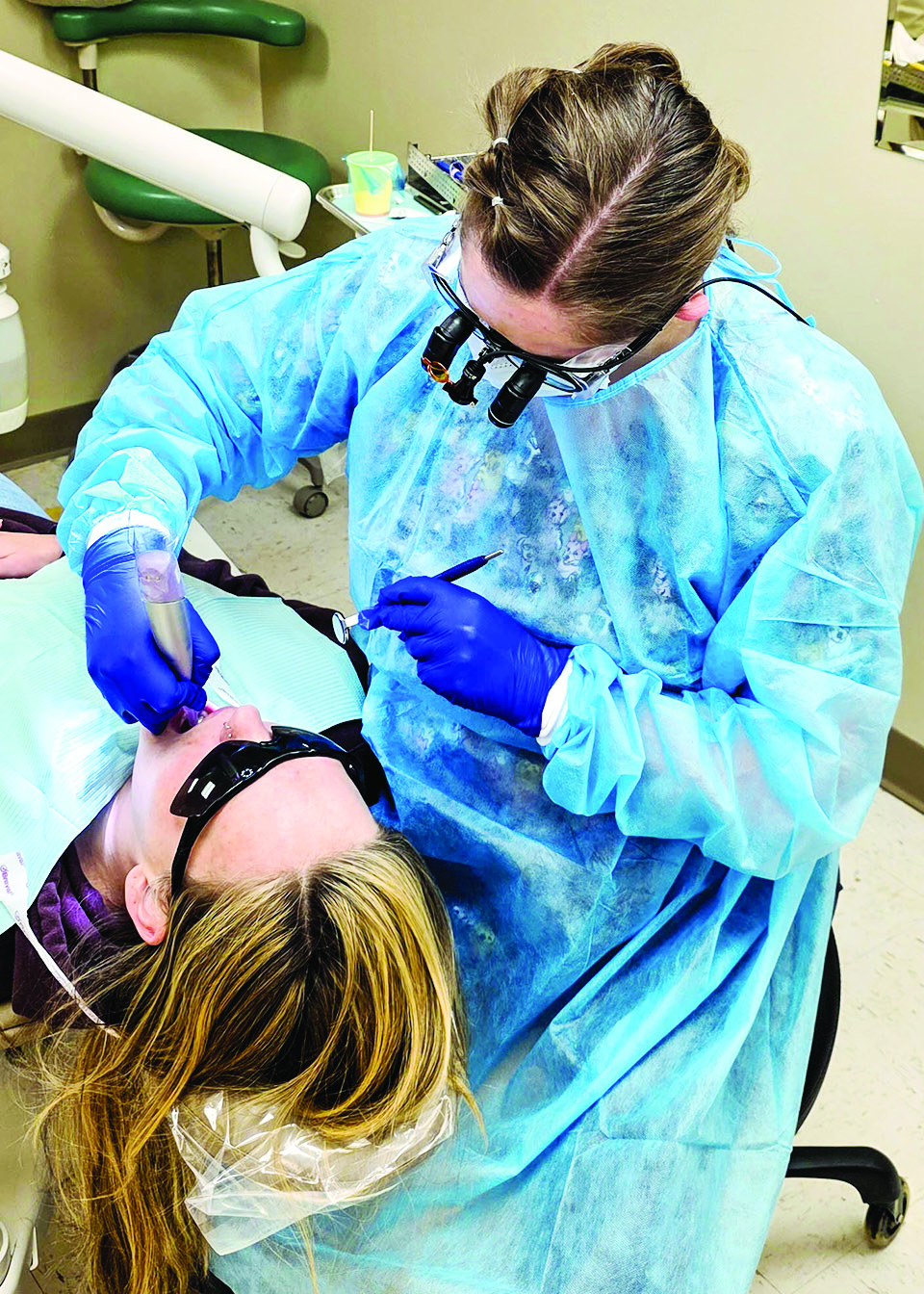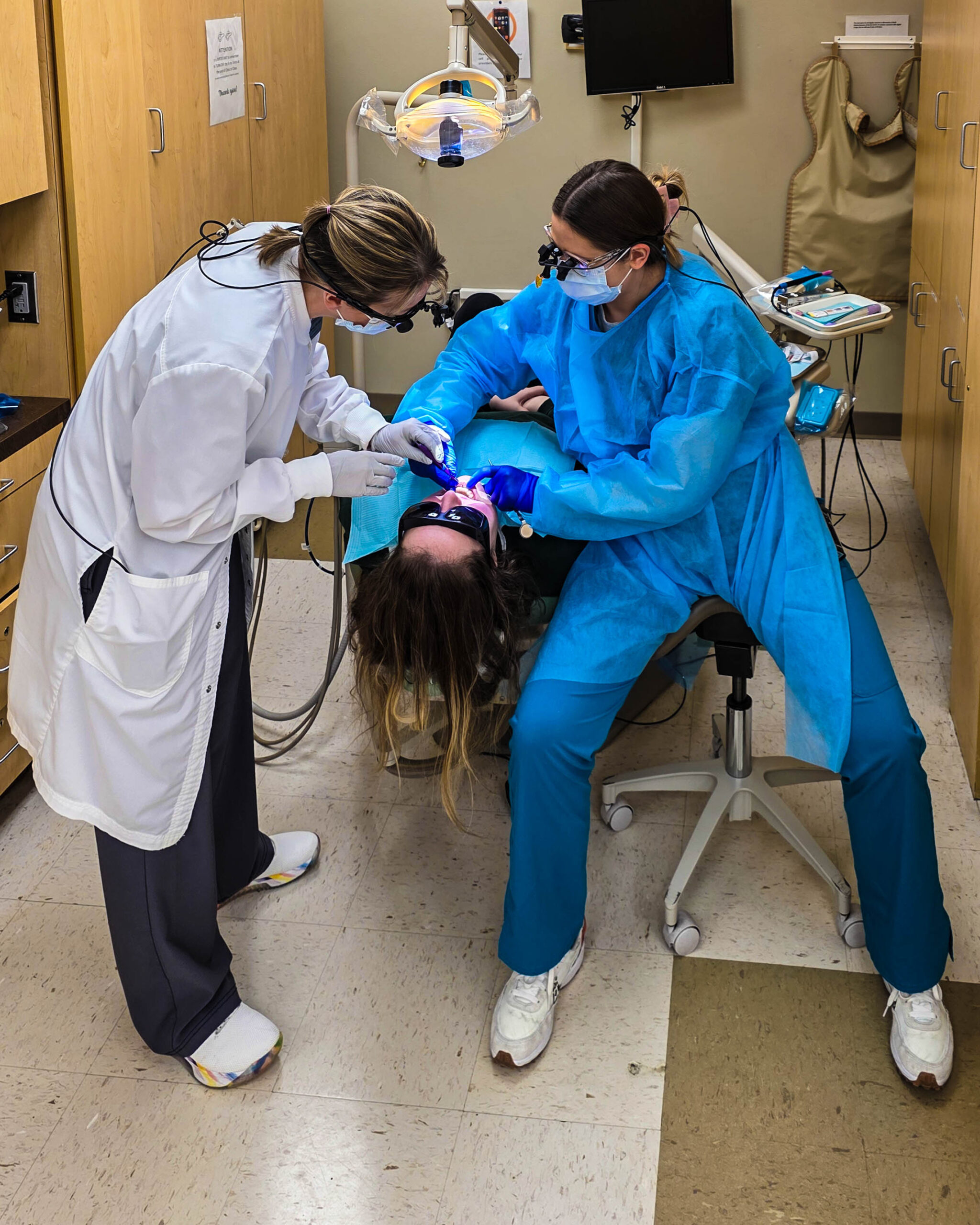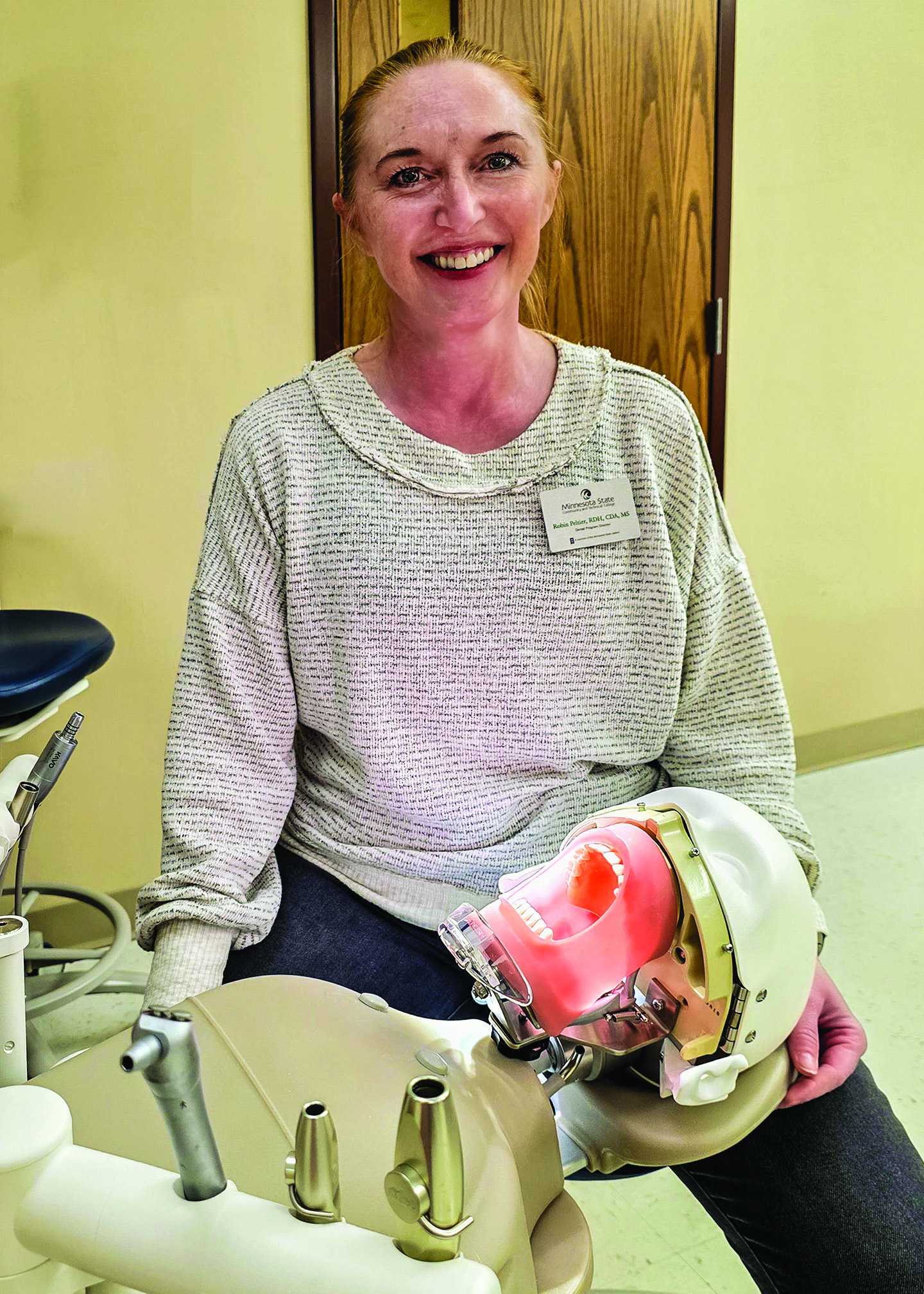
First-year dental hygiene student Shelby Franke examines a patient at M State’s Dental Clinic. (Photos/Nancy Hanson.)

Dental hygiene student Summer Peterson (at right) works on fellow student Emma Driscoll, while instructor Sarah Desjarlais looks on.
Nancy Edmonds Hanson
They’re not “drills” anymore. They’re “handpieces.”
That’s just part of the good news at M State’s Dental Clinic. For the dental-phobic – those who fear either the dentist’s drill (er, handpiece) or bills that intimidate the uninsured – the weekday cleanings and exams offered on the Moorhead campus are nearly guaranteed to bring a smile to their faces.
At the same time, the 20 students enrolled in the two-year dental hygiene program and 30 studying to become dental assistants have plenty of reason to smile. A national shortage of dental assistants and hygienists virtually guarantees their choice of well-paid positions in dental practices after they graduate.
“All our students have jobs before graduation,” reports Robin Peltier, the dental program’s director. The program’s Facebook site carries seemingly endless posts by dentists seeking their services. Starting salaries, she says, range from $24 to $26 per hour for assistants, who need to complete only a 9-month program after finishing 18 months of required general courses. For hygienists, whose dental training requires 2 years after generals, that’s $28 to $32. “And my numbers are probably on the low side,” she adds.
The main issue facing would-be dental majors isn’t what to do when they get out: It’s getting in. The well-established program generally has received 60 to 80 applications for the 20 hygiene positions available each year. This year? Robin says they totaled 98.
The competition for the dental assisting option is a bit less, but only – Robin says – because fewer are familiar with that role. “Many students don’t know what ‘assisting’ is.”
She explains the dichotomy between the two options: “While hygienists do much the same thing throughout the day, cleaning teeth, applying sealants and treating patients with periodontal disease, assistance involves a lot more variation. They can work in orthodontic practices with braces, assist oral surgeons, or perform 3-D scanning for tooth models for crowns, bridges or implants They might work with endodontists who do root canals.” Or they may decide to continue at M State and complete the longer dental hygiene regimen, or go on to dentistry itself.
Their studies begin with practicing new skills on typodonts, mannikin mouths with realistic simulated teeth, rubber gums and the palate. The sim lab, where these simulated “patients” are studied, was added during the COVID epidemic, when students could not work on human patients. Today it offers a valuable opportunity for the class to work under the eagle eyes of their instructors, who can view every move close up via video cam. Their classwork also includes a range of dental and clinical science courses, including relevant knowledge from nutrition and anatomy to oral pathology, radiology and pain control.
The heart of the dental hygiene program, though, lies in the college’s dental clinic. Here, advanced students examine and clean the teeth of patients from babyhood to the elder years. The public is welcome to make appointments throughout the school year, when 18 students are available to see them from Monday through Friday for three-hour sessions. The students’ work is closely monitored by the program’s full-time faculty and adjuncts; a licensed dentist is also on hand during clinic sessions.
Among the scientific and medical skills the program teaches, Robin says, is a softer focus on the human side of dental practice. “Dental phobia is very common, often inspired by a bad dental experience as a child,” she observes. “We see lots of kids here. We teach the students the importance of making sure their first appointments are fun. Even if it means just riding up and down in the chair, we want to make sure that they go home with smiles on their faces. It only takes one bad experience to create fear that lasts a lifetime.”
Students of every age, along with older adults, make up a good share of the 144 patients whom the clinic sees every week. Open from 9 a.m. to 4 p.m. Monday, Tuesday and Wednesday, and from 9 to noon Thursday and Friday, the clinic takes appointments throughout the school year. With graduation coming up May 5, those dates are full for now. But callers are already calling to reserve available slots in in the fall.
The big attraction to the clinic is its prices. Student visits are $25, while the cost of services for adults ranges from $45 to $55. A full set of dental x-rays is $45. “It’s a godsend for people without dental insurance,” Robin points out. Patient fees support the clinic’s operation. She adds that some local dentists refer their uninsured patients to M State for routine cleanings, while they return to their home practice for advanced dental care.
Smiles for the patients. Smiles for the students. And what may bring the biggest smiles of all to hopeful student applicants and graduates entering the workforce?
Robin is quick with an answer: “The pay is fantastic, of course, but there’s more. Dental assisting and hygiene have the world’s best hours. You’ll never work a holiday or a weekend.”
To make an appointment with the M State Dental Clinic, call (218) 299-6560.



